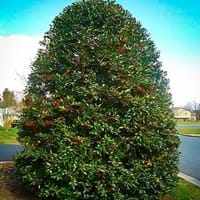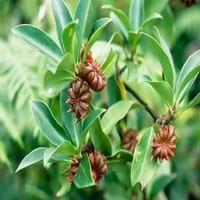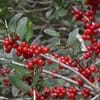Life Span
Perennial
Perennial
Type
Broadleaf Evergreen
Broadleaf Evergreen
Origin
Hybrid origin
Southeastern United States
Types
Not Available
Not Available
Habitat
Subtropical climates, Woodland Garden Secondary, Woodlands
Dappled Shade, Sunny Edge, Woodlands
USDA Hardiness Zone
6-9
6-9
AHS Heat Zone
Not Available
Not Available
Habit
Pyramidal
Upright/Erect
Flower Color
White
Yellow green
Flower Color Modifier
Bicolor
Bicolor
Fruit Color
Red, Crimson
Green, Brown
Leaf Color in Spring
Green, Dark Green
Olive
Leaf Color in Summer
Dark Green
Olive
Leaf Color in Fall
Dark Green
Olive
Leaf Color in Winter
Dark Green
Olive
Leaf Shape
Pinnate
Long, Alternate
Plant Season
Spring, Summer, Fall, Winter
Spring, Summer, Fall, Winter
Sunlight
Full Sun, Partial Sun, Partial shade, Full Shade
Full Sun, Partial Sun, Partial shade
Type of Soil
Clay, Loam, Sand
Clay, Loam, Sand
The pH of Soil
Acidic, Neutral
Acidic, Neutral
Soil Drainage
Average
Average
Bloom Time
Spring
Late Spring, Early Summer
Tolerances
Drought, Soil Compaction
Not Available
Where to Plant?
Ground
Ground
How to Plant?
Rooted stem cutting, Stem Cutting, stem tip cuttings
Seedlings
Plant Maintenance
Medium
Medium
Watering Requirements
Average Water Needs, Do not water frequently
Average Water Needs, Do Not over Water
In Summer
Lots of watering
Lots of watering
In Spring
Moderate
Moderate
In Winter
Average Water
Average Water
Soil pH
Acidic, Neutral
Acidic, Neutral
Soil Type
Clay, Loam, Sand
Clay, Loam, Sand
Soil Drainage Capacity
Average
Average
Sun Exposure
Full Sun, Partial Sun, Partial shade, Full Shade
Full Sun, Partial Sun, Partial shade
Pruning
Remove damaged leaves, Remove dead branches, Remove dead leaves
Remove damaged leaves, Remove dead branches, Remove dead leaves
Fertilizers
All-Purpose Liquid Fertilizer, Apply N-P-K
Compost
Pests and Diseases
Leafminers, Mites, Nematodes, Red blotch, Root rot, Tar spot
Fungal Diseases
Plant Tolerance
Drought
Drought
Flowers
Insignificant
Insignificant
Flower Petal Number
Single
Single
Foliage Texture
Medium
Coarse
Foliage Sheen
Glossy
Glossy
Allergy
Diarrhea, Mildly Toxic, Vomiting
Hypertonia, Nausea, Spasms, Vomiting
Aesthetic Uses
Cottage Garden, Showy Purposes, Used for making hedges
Beautification, Borders
Beauty Benefits
Not Available
Good for skin
Environmental Uses
Air purification
Erosion control
Medicinal Uses
Not Available
Antibacterial, Appetizer, Expectorant, Homeopathy
Part of Plant Used
Fruits
Fruits
Other Uses
Food for animals, Used for Landscaping
Used as essential oil, Used in flavouring curries, teas, Used to sweeten the breath
Used As Indoor Plant
No
No
Used As Outdoor Plant
Yes
Yes
Garden Design
Feature Plant, Foundation, Hedges, Mixed Border, Screening, Wind Break
Hedges, Mixed Border, Screening, Wind Break, Tropical, Wildflower
Botanical Name
ILEX 'Nellie Stevens'
ILLICIUM parviflorum
Common Name
Nellie Stevens Holly
Chinese Star Anise, Badiam
In Hindi
Nellie Stevens Holly
चक्र फूल
In German
Nellie Stevens Holly
Sternanis
In French
Nellie Stevens Holly
Anis étoilé
In Spanish
Nellie Stevens Holly
Anís estrellado
In Greek
Nellie Stevens Holly
Γλυκάνισο
In Portuguese
Nellie Stevens Holly
Star Anise
In Polish
Nellie Stevens Holly
Anyż
In Latin
Nellie Stevens Holly
Star Anise
Phylum
Not Available
Magnoliophyta
Class
Not Available
Magnoliopsida
Order
Aquifoliales
Illiciales
Family
Aquifoliaceae
Illiciaceae
Clade
Angiosperms, Eudicots
Angiosperms
Tribe
Not Available
Illicieae
Subfamily
Not Available
Illicioideae
Number of Species
Not Available
Properties of Nellie Stevens Holly and Star Anise
Wondering what are the properties of Nellie Stevens Holly and Star Anise? We provide you with everything About Nellie Stevens Holly and Star Anise. Nellie Stevens Holly has thorns and Star Anise doesn't have thorns. Also Nellie Stevens Holly does not have fragrant flowers. Nellie Stevens Holly has allergic reactions like Diarrhea, Mildly Toxic and Vomiting and Star Anise has allergic reactions like Diarrhea, Mildly Toxic and Vomiting. Compare all the properties and characteristics of these two plants. Find out which of these plant can be used as indoor plant. If you are interested to decorate your house and garden, find out aesthetic uses, compare them and select the plant which will beautify your surrounding. Along with beautification, try comparing medicinal and edible uses of Nellie Stevens Holly and Star Anise and you can choose the plant having best and most benefits.
Season and Care of Nellie Stevens Holly and Star Anise
Season and care of Nellie Stevens Holly and Star Anise is important to know. While considering everything about Nellie Stevens Holly and Star Anise Care, growing season is an essential factor. Nellie Stevens Holly season is Spring, Summer, Fall and Winter and Star Anise season is Spring, Summer, Fall and Winter. The type of soil for Nellie Stevens Holly is Clay, Loam, Sand and for Star Anise is Clay, Loam, Sand while the PH of soil for Nellie Stevens Holly is Acidic, Neutral and for Star Anise is Acidic, Neutral.
Nellie Stevens Holly and Star Anise Physical Information
Nellie Stevens Holly and Star Anise physical information is very important for comparison. Nellie Stevens Holly height is 460.00 cm and width 300.00 cm whereas Star Anise height is 180.00 cm and width 150.00 cm. The color specification of Nellie Stevens Holly and Star Anise are as follows:
Nellie Stevens Holly flower color: White
Nellie Stevens Holly leaf color: Green and Dark Green
Star Anise flower color: Yellow green
- Star Anise leaf color: Olive
Care of Nellie Stevens Holly and Star Anise
Care of Nellie Stevens Holly and Star Anise include pruning, fertilizers, watering etc. Nellie Stevens Holly pruning is done Remove damaged leaves, Remove dead branches and Remove dead leaves and Star Anise pruning is done Remove damaged leaves, Remove dead branches and Remove dead leaves. In summer Nellie Stevens Holly needs Lots of watering and in winter, it needs Average Water. Whereas, in summer Star Anise needs Lots of watering and in winter, it needs Average Water.





